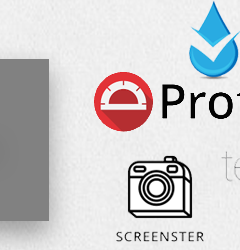27 Jun

Introduction:
Web testing is the process of evaluating and verifying the functionality, usability, performance, and security of a web application or website. It is an essential step in the software development life cycle as it ensures that the web application or website meets the user’s expectations and requirements. Web testing can be broadly classified into two categories: manual testing and automated testing. Manual testing involves testing the web application or website manually by a human tester, whereas automated testing involves using tools and scripts to automate the testing process.
The web testing process typically involves the following steps:
- Requirements Analysis: This involves understanding the requirements of the web application or website to be tested.
- Test Planning: In this step, a test plan is created which outlines the testing objectives, test scenarios, and test cases.
- Test Execution: This involves executing the test cases and verifying the functionality, usability, performance, and security of the web application or website.
- Test Reporting: In this step, the test results are documented and reported to the development team for further analysis and action.
- Test Closure: This is the final step in the web testing process, which involves evaluating the overall testing process and identifying areas for improvement.
What is Web Testing?
Overall, web testing is an important process that ensures the quality of the web application or website and helps to identify and fix issues before they can impact users.
Web testing is the process of evaluating and verifying the functionality, usability, performance, and security of a web application or website. It involves testing the web application or website’s various components, such as web pages, links, forms, databases, and servers, to ensure that they meet the expected requirements and provide a seamless user experience.
Web testing can be performed manually by a human tester, or it can be automated using testing tools and frameworks. Manual testing involves executing test cases and scenarios manually, whereas Automated Testing involves using scripts and software tools to automate the testing process.
The goal of web testing is to identify and report any defects or issues with the web application or website before it is released to the public. This helps ensure that the web application or website is of high quality, meets user expectations, and functions correctly in various environments and scenarios.
Web testing can cover a broad range of testing types, including functional testing, usability testing, performance testing, security testing, and compatibility testing. Each type of testing focuses on different aspects of the web application or website, and each is important for ensuring a high-quality product.
Role of Selenium in Web Testing:
Selenium is a popular open-source automation testing tool used for web testing. It is widely used by software testers and developers to automate the testing of web applications and websites. Selenium provides a range of features and tools that make it an ideal choice for web testing, including:
- Cross-browser testing: Selenium can be used to test web applications on different browsers such as Chrome, Firefox, Safari, and Internet Explorer.
- Record and playback: Selenium IDE allows testers to record their actions and playback the recorded tests. This makes it easy to create and execute automated tests without any coding knowledge.
- Multiple programming languages: Selenium supports multiple programming languages such as Java, Python, C#, and Ruby, allowing developers and testers to use the language they are most comfortable with.
- Integration with other tools: Selenium can be integrated with other tools and frameworks, such as TestNG, JUnit, and Maven, to enhance its functionality and streamline the testing process.
- Parallel testing: Selenium can execute multiple tests in parallel, making it ideal for testing web applications that require high-volume testing.
- Cost-effective: Selenium is an open-source tool and is available for free, making it an attractive option for companies with limited budgets.
Conclusion:
In summary, Selenium plays a critical role in web testing as it provides a range of features and tools that simplify the testing process and enable testers to identify and report defects quickly and accurately. With its cross-browser testing capabilities, support for multiple programming languages, and integration with other tools, Selenium is a powerful tool for web testing that can help ensure the quality of web applications and websites.
Web testing is a crucial part of the software development life cycle, as it helps ensure the functionality, usability, performance, and security of web applications and websites. The web testing process involves identifying the requirements of the web application or website, creating a test plan, executing test cases, documenting test results, and identifying areas for improvement.
Web testing can be performed manually by a human tester or automated using tools and frameworks such as Selenium. Automation tools like Selenium provide a range of features and tools that make it easy to create and execute automated tests, enabling testers to identify and report defects quickly and accurately. Additionally, these tools can integrate with other frameworks and tools to enhance their functionality and streamline the testing process.
Overall, web testing is essential for ensuring that web applications and websites meet user expectations and provide a seamless user experience. By detecting and resolving defects early in the development process, web testing can help minimize the risk of issues and ensure that the web application or website is of high quality.
Deepali works as a Software Development Engineer in Test, at QACraft, she is a computer science engineer with a degree of bachelor and has 3+Years of experience in the software industry as a Manual Tester and Automation Test Engineer. In her free time, she loves reading and podcasts.
Related Post
Leave a Comment Cancel reply
Categories
- Agile Testing
- Alpha Testing
- Android App Testing
- API Testing
- Automation Testing
- Banking Domain Testing
- Beta Testing
- cloud testing
- Corporate Life
- cross browser testing
- Cypress Testing
- desktop testing
- Difference
- Domain Testing
- E-commerce Website Testing
- E-learning App Testing
- End-To-End Testing
- Functional Testing
- Game Testing
- Healthcare Domain Testing
- Integration Testing
- Interview Questions
- ios App Testing
- Jenkins
- JIRA
- Jmeter
- K6
- Katalon
- Manual Testing
- Mobile App Testing
- Monkey Testing
- Non-Functional testing
- Performance Testing
- Postman
- Pytest
- Regression Testing
- Salesforce Testing
- Sanity Testing
- security testing
- Selenium Testing
- Smoke Testing
- Software Testing
- Stability testing
- Static Testing
- Test Case
- Test Environments
- Test Scenario
- Test Script
- TestRigor
- vdfv
- Web Application Testing
© Copyright 2025 QACraft Pvt. Ltd. All rights reserved.
Contact : +91 9157786796




deepali